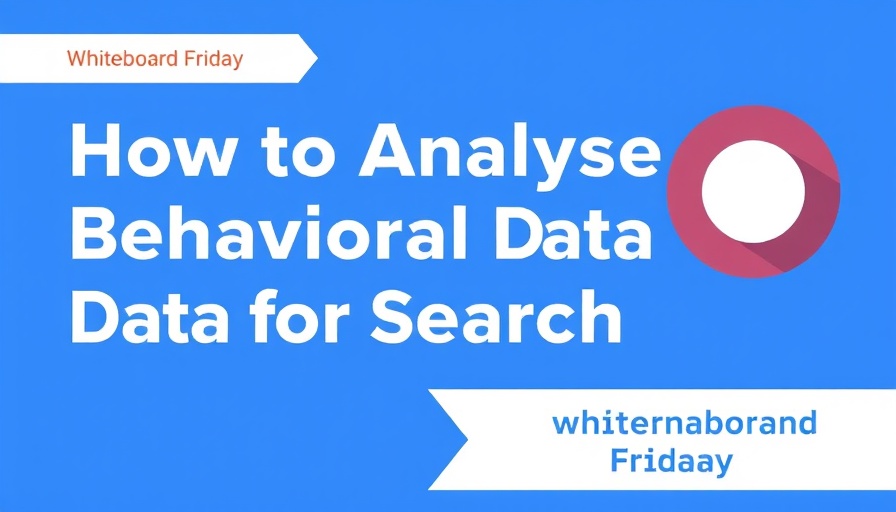
Understanding Behavioral Data: A Game Changer for SEO
As the digital landscape continues to evolve, the importance of analyzing behavioral data for search has never been more critical. With transformative changes in how users engage with technology, SEO practitioners must adapt their strategies. Driven by extensive research, practitioners emphasize what it means to integrate behavioral data into SEO effectively.
The Shift from Linear Journeys to User-Centric Paths
User behavior has undergone a significant shift. Traditional search, which often followed a straightforward linear path, is now influenced by various channels, including social media and AI-driven platforms. Users are increasingly making conversational searches, which complicates the understanding of their intentions. Consequently, it’s vital for marketers not just to optimize for searches but to adapt to a multi-channel user experience where the customer journey is increasingly complex.
Essential Tools for Analyzing Behavioral Data
Marketers can leverage a range of tools to analyze behavioral data. Facebook Pixel and Google Search Console provide insights into user interactions, enabling SEO specialists to diagnose issues. For example, tracking bounce rates and engagement times can highlight problem areas, while advanced metrics from heatmaps and user feedback can reveal deeper insights into user experiences. By assessing both quantitative and qualitative data, marketers can develop a more comprehensive understanding of user behavior.
Strategies for Enhanced SEO through Behavioral Insights
Revolutionizing SEO approaches begins with understanding behavioral patterns. Focused strategies include optimizing landing pages based on user engagement metrics and improving site navigation to streamline user experiences. Personalization is also key; tailoring content to align with user interests leads to increased engagement. In essence, effective analysis of behavioral data informs all aspects of content strategy, from identifying conversion bottlenecks to enhancing user satisfaction.
Creating a Positive User Experience through Data
At the heart of analyzing behavioral data lies the objective of improving user experience. Google's focus on UX means that a smooth, engaging user journey is paramount. Behavioral data can illuminate aspects that need refinement, ensuring that users not only arrive on your site but stay engaged. This encompasses everything from the visual appeal of landing pages to the speed and reliability of checkout processes.
Conclusion: The Future of Search Lies in Behavioral Analysis
As the landscape of digital marketing evolves, focusing on behavioral data transcends mere metrics. It is about understanding and influencing user preferences and behavioral nuances. Therefore, marketing professionals must remain vigilant in monitoring user interaction and adapting strategies accordingly to create more meaningful connections and ultimately drive conversions.
 Add Row
Add Row  Add
Add 




 Add Row
Add Row  Add
Add 

Write A Comment